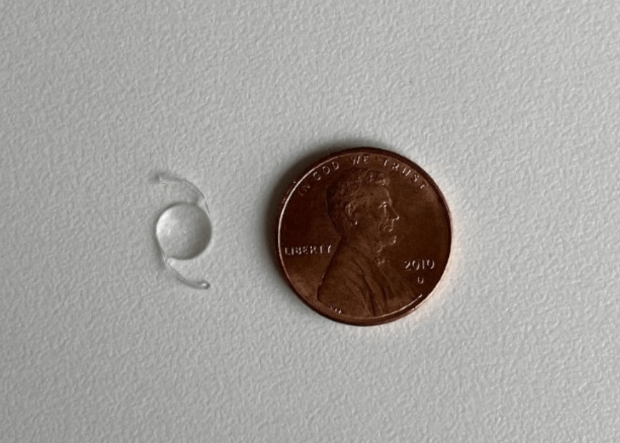Lose the lenses: Options for optimizing your vision
We all understand and appreciate our ability to see the world clearly. To enjoy brilliant sunsets or the face of a loved one is priceless. Not everyone is born with perfect vision, and even if we are, as we age our vision can become less clear and necessitate the need for glasses, contacts or reading glasses. But there are a wide array of vision correction options not everyone knows about.
“Searching for your reading glasses, having dry and itchy contact lenses, or wiping your glasses in the rain and snow are annoying to say the least,” said Dr. Alison Tendler, a board-certified ophthalmologist and the owner and creator of ART Vision and ARTisan Skin and Laser Center in Sioux Falls.
“Fortunately, with the latest advancements in technology, no matter if you have nearsightedness, farsightedness, astigmatism or presbyopia — meaning you need reading glasses — there are several great options to maximize the clarity of your vision while minimizing your dependence on corrective lenses.”
Probably the most widely known vision correction procedure is LASIK. The procedure uses two finely tuned lasers: one to create a flap on the cornea surface and the other to reshape the cornea. This second step — changing the shape — is what ultimately reduces your need for glasses. The flap is returned back into normal position and healing occurs.
It makes sense that having a healthy eye before proceeding with LASIK or any other vision correction is important. While everyone is different, issues that could impede the possibility of LASIK as your best vision correction option may include:
Severe dry eye syndrome.
Glasses correction is too high: minus 7.00 or higher.
Cornea is too thin.
Corneal pathology such as keratoconus, abnormal astigmatism.
“Beyond LASIK, there are other refractive surgical options that you may be a better fit for or may suit your vision goals differently,” Tendler said. “Our team at ART Vision performs an extensive evaluation with every patient, exploring vision correction to determine the best surgical fit for not only your eyes but also your lifestyle needs.”
All other refractive options tend to be compared to LASIK. Why? Because we desire great clarity and quality of vision with minimal downtime and a quick visual recovery that LASIK can deliver. But it’s likely you may not have heard of some of these options before, including PhotoRefractive Keratectomy (PRK), Implantable Contact Lens (ICL) or Refractive Lens Exchange (RLE). All of these work to treat nearsightedness, farsightedness and astigmatism. RLE also helps reduce the need for reading glasses.
PRK is very similar to LASIK except there is no flap created. Instead, the top layer of corneal cells are gently removed, and then the same laser as in LASIK is used to reshape the cornea.
“Remember, it is this second step — changing the cornea shape — that ultimately reduces your need for glasses,” Tendler said. “This procedure gives the same visual outcome as LASIK, but it will take a little more time to achieve that fabulous vision.”
An ICL is a lens that looks very similar to a regular contact lens, but it is instead placed inside the eye to minimize glasses or contacts. For patients who are 21 to 45 years old, the ICL provides high-quality vision, has a quick recovery and immediate vision results. It also treats nearsightedness, farsightedness and astigmatism.
“ICLs are a good option for any patient who meets criteria and either does not desire a laser treatment or is not a good candidate for other laser procedures such as LASIK or PRK,” Tendler said. “I personally chose this option for my own eyes.”
RLE is best suited for patients who are older than 50, have not developed a cataract or have only minimal cataract development, desire clearer vision and are seeking to gain independence from glasses or contacts at multiple distances: far, intermediate and near.
The size of an RLE compared with a penny is pictured below.Rather than changing the shape of the cornea like LASIK or PRK, your natural aging or “impaired” lens is removed and replaced with a corrective one. This method is good for patients with nearsightedness, farsightedness, astigmatism or presbyopia.
“The beauty of this option is it is the only refractive option that is long term,” Tendler said. “The surgical process is very similar to the removal of a cataract but is done strictly for vision correction. Luckily, this option also means you will never go on to develop a cataract because the lens proteins that form a cataract have already been removed.”
So how do I determine the best procedure for me?
Let us help you! First, we begin with an evaluation at ART Vision, which is on 69th Street and Western Avenue, with highly detailed and comprehensive testing. The testing is easy, and the technology looks at the many microscopic factors that make up your unique eye — almost like your own custom fingerprint. Using these tests and a great dilated clinical exam, our team can advise you of your best options and solutions to fit your unique lifestyle and vision goals.
I am ready to schedule my evaluation at ART Vision! What’s next?
If you are interested in a refractive evaluation or even a second opinion, Dr. Alison R. Tendler and the team at ART Vision look forward to guiding you on your vision journey. Call 605-306-2020 or email us at contact@artvisionsf.com to learn more and schedule your appointment. It’s your time to See the World Better and See Yourself Better.


